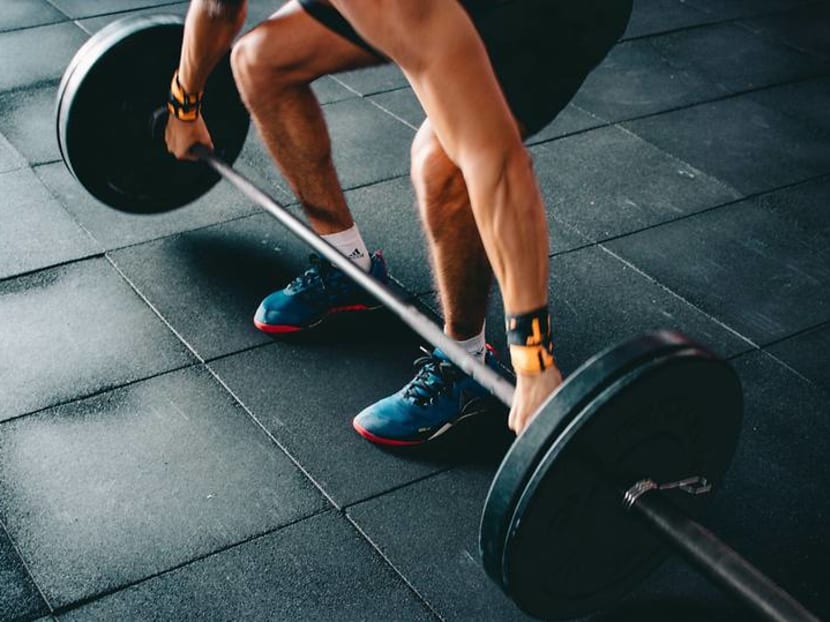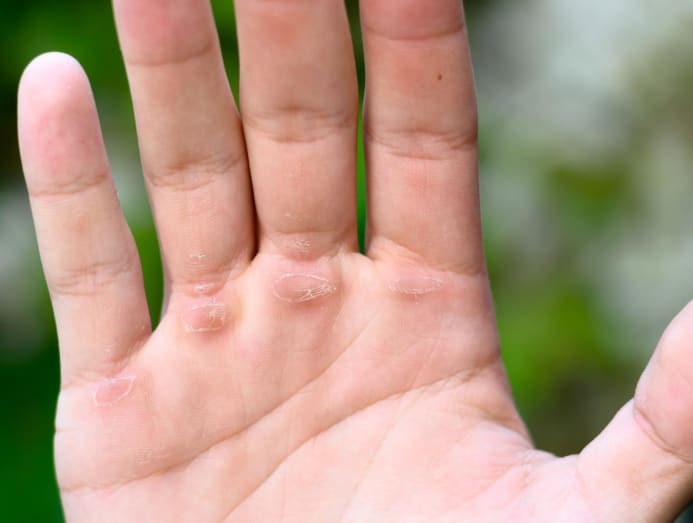Do workouts make your hands and feet feel rough? Here’s how to treat calluses
Whether you run, climb or do CrossFit, intense physical activities can lead to dry, rough and thick skin. But there are solutions without having to give it all up.

(Photo: Unsplash/Victor Freitas)
For some gym-goers and sporty types, calluses are like hard-earned trophies for working out hard enough.
But there are also individuals who aren’t keen on having hands that feel like sandpaper. And there are some who find their choices of footwear becoming limited because of the discomfort calluses create.
What exactly are calluses? They’re basically “hard, dry, thick and typically yellowish” skin patches that mostly develop along ones’ fingertips, base of the fingers, balls of the feet and heels", said consultant dermatologist Dr Angeline Yong of Angeline Yong Dermatology.
Though largely painless, they may become increasingly uncomfortable as they grow in size and thickness, she added.

These form due to “repetitive action causing pressure and friction”, said consultant dermatologist Dr Lee Shan Xian from Changi General Hospital. Which is exactly what happens during regular physical activities, like working out.
PREVENTION AND TREATMENT
Since calluses can thicken, it is important to look into ways to counter them – especially if you have no intention of giving up the sport that created them in the first place.
For climbers and CrossFitters, Dr Yong suggested padding the affected areas with over-the-counter moleskin.
Senior personal trainer Jacob Toh, 28, who has been lifting weights for eight years, said he strategises “the area of hand in contact with the bar while training, and applies moisturiser to the affected area daily”.
Weightlifter Maria Lau, on the other hand, uses lifting straps. “When I can grip well, there is less tendency to develop calluses,” said the 39-year-old Singaporean, who has been training for 15 years.

Dr Yong added that these straps “serve as a bridge between wearing gloves and going barehanded”. Since the straps wrap around the bar as well as the wrists, they not only let you lift more than your natural grip allows but also protect the skin from friction, she said.
Or try applying chalk to your hands, added Dr Lee. “Apply enough to form a protective layer on the hands. However, chalk can be extremely drying, so it is important to wash your hands with a moisturising soap.”
Dr Yong added that regularly moisturising the skin with creams and lotions that contain salicylic acid, ammonium lactate and urea is also effective in gradually softening hardened tissues.
To prevent existing foot calluses from worsening, comfortable shoes that give toes plenty of wiggle room are your best bet. “You may also purchase supportive footwear with shock-absorbing soles, as well as over-the-counter pads and insoles that reduce friction that cause calluses along the balls of the feet and heels," she said. Also, patients should always wear socks with shoes and avoid walking barefoot.
Whatever you do, do not peel your calluses. “Picking at or peeling them off can result in tears or cracks in the skin, which increases the risk of infection,” said Dr Lee.

If a callus is causing you discomfort, try soaking your feet in warm water for 15 to 20 minutes once a week to soften the thickened skin. Then, use a pumice stone or foot file to gently scrub the thick skin away.
“Be careful when using over-the-counter medicated corn pads/plasters or liquid corn removers that contain salicylic acid,” she added. “Salicylic acid can irritate healthy skin and may lead to infection.”
Not that trimming down the thickened skin yourself is a good idea but if you have diabetes, the results can be worse, said Dr Yong. “The College of Podiatry in the United Kingdom advises against using sharp objects to cut away calluses as injuries may occur. In fact, this at-home procedure is especially dangerous among diabetics due to poorer healing responses and impeded blood flow.”
Instead, visit a dermatologist who can safely and painlessly remove the tissues with “prescription skin-softening solutions or scalpel-based procedures”, said Dr Yong.





